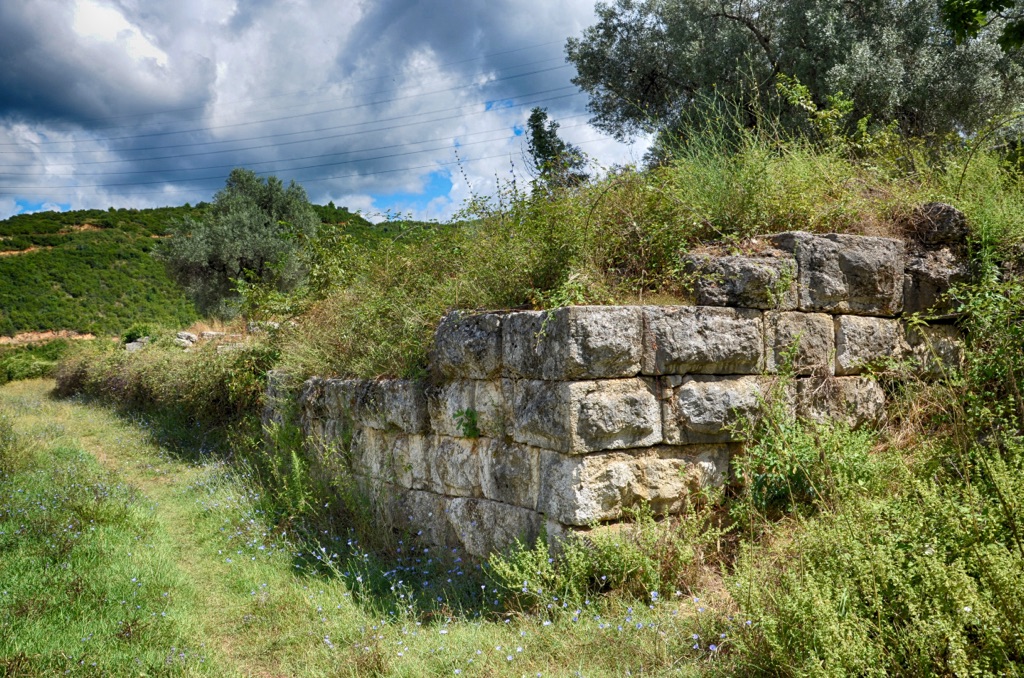Albanopolis, an ancient city located in present-day Albania, has intrigued historians and archaeologists for years. Its exact location remained a mystery for centuries until archaeological evidence pointed towards the vicinity of Zgerdhesh hill, near Krujë. The city’s origins trace back to the Illyrians, an ancient group of people who lived in the Balkans. Ptolemy, the Greco-Roman geographer, first mentioned Albanopolis in his work, suggesting its significance during antiquity. Despite its historical importance, much about Albanopolis remains shrouded in mystery, making it a fascinating subject for study.
Get your dose of History via Email
Historical Background of Albanopolis
Albanopolis was first mentioned by Ptolemy in the 2nd century AD. However, its discovery by modern archaeologists happened much later. In the 20th century, scholars began to piece together its history. They identified the ruins near Krujë as the likely location of this ancient city. The Illyrians, known for their fierce independence, built Albanopolis. It served as a central hub in the region.
Throughout history, various groups inhabited the city. The Romans conquered it during their expansion into the Balkans. Later, it witnessed the rise and fall of the Byzantine Empire. Despite these changes, Albanopolis retained its strategic importance. It was a witness to numerous historical events, including battles and trade developments.
The city’s significance declined with the advent of the Middle Ages. Over time, it was abandoned and forgotten. It wasn’t until recent archaeological efforts that the city’s past began to resurface. These excavations have unearthed artifacts and structures. They provide insights into the lives of its ancient inhabitants.
Albanopolis played a role in regional politics and trade. Its location made it a crossroads for various cultures and empires. The city’s history reflects the broader narrative of the Balkans. It’s a tale of conquest, resilience, and cultural exchange.
Today, the site of Albanopolis offers a window into the past. It allows historians to piece together the complex tapestry of Illyrian and Balkan history. The ongoing research continues to reveal new aspects of this enigmatic city. It underscores its importance in ancient times.
About Albanopolis
Albanopolis, nestled in the rugged terrain of Albania, boasts a rich history. The city’s remains provide a glimpse into its architectural prowess. The Illyrians constructed it using local stone and traditional building techniques. These methods were common in the region during that era.
The city’s layout followed a typical Illyrian design. It included defensive structures such as walls and towers. These fortifications protected Albanopolis from invaders. The city also featured public spaces, like a central square and possibly a market area. These spaces were vital for community life and commerce.
Archaeologists have uncovered various buildings within the city. These include residential quarters and religious sites. The construction materials primarily consisted of limestone and other locally sourced materials. The architectural highlights of Albanopolis reflect the ingenuity of its builders. They adapted to the challenging landscape.
Despite the ravages of time, some structures at Albanopolis have withstood the test of time. They offer valuable insights into the city’s urban planning and construction methods. The craftsmanship evident in the ruins speaks to the skill of Illyrian builders. They created a city that endured for centuries.
Further study of the site’s architecture could reveal more about the daily lives of its inhabitants. It could also shed light on the cultural and economic interactions that took place within its walls. The building materials and construction techniques of Albanopolis are a testament to the city’s historical significance and resilience.
Theories and Interpretations
Albanopolis has been the subject of various theories and interpretations over the years. Its purpose and the lives of its inhabitants have intrigued scholars. Some believe it was a major political and economic center for the Illyrians. Others suggest it had religious significance.
The mysteries of Albanopolis have led to speculation about its role in the region. The city’s strategic location suggests it was a key player in trade routes. It may have facilitated the exchange of goods and ideas across the Balkans.
Historical records are scarce, so much of what is known about Albanopolis comes from archaeological findings. These have been matched to historical accounts where possible. The interpretations of these findings are ongoing. They continue to evolve as new evidence comes to light.
Dating the site has been a challenge for archaeologists. They have employed various methods, including stratigraphy and radiocarbon dating. These techniques have helped establish a timeline for the city’s occupation and decline.
The theories surrounding Albanopolis are numerous. They range from its role in regional conflicts to its economic activities. As research continues, the city’s true story will hopefully become clearer. This will provide a more comprehensive understanding of its place in history.
At a glance
Country; Albania
Civilization; Illyrian
Age; Approximately 2nd century AD
Conclusion and Sources
Reputable sources used in the creation of this article include;
- Wikipedia; https://en.wikipedia.org/wiki/Albanopolis
- Britannica; https://www.britannica.com/place/Albania
- World History Encyclopedia; https://www.worldhistory.org/illyria/
- UNESCO; https://whc.unesco.org/

